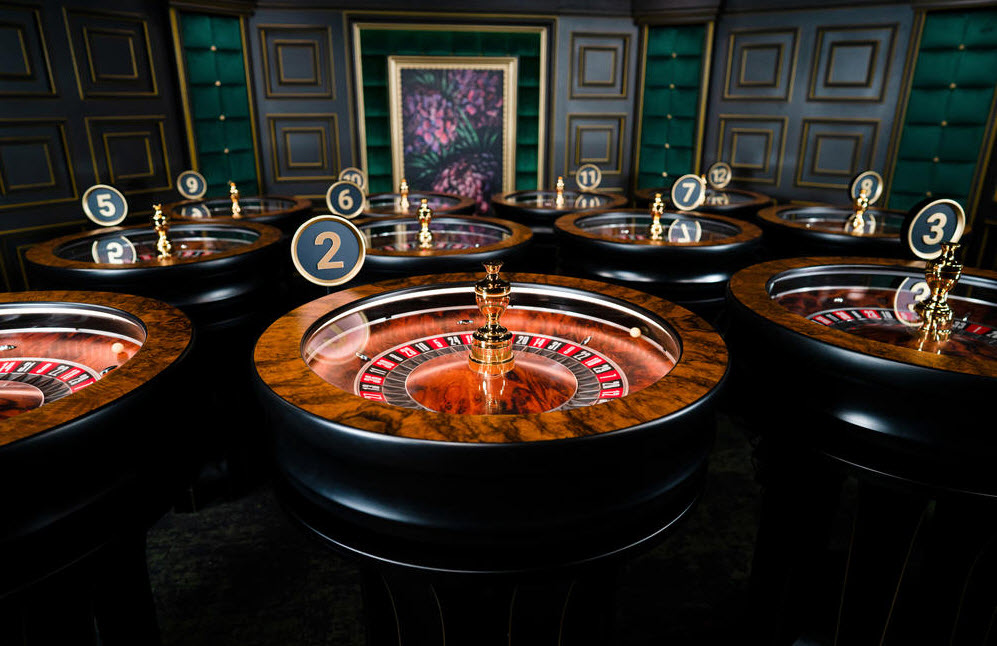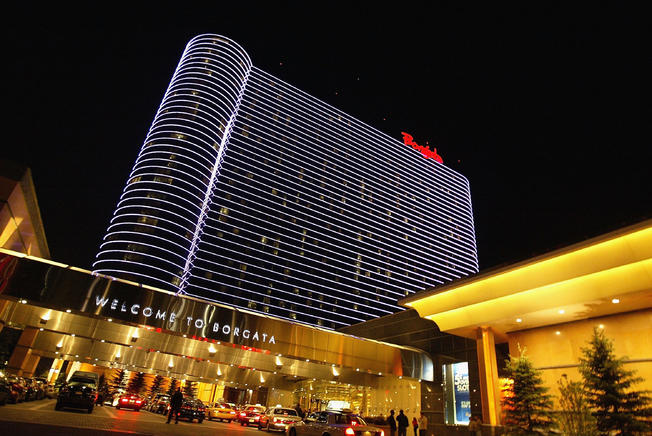Head to any casino from Las Vegas to Atlantic City to Monte Carlo, and a few things are certain. You’ll find plenty of slot machines, table games, and other gambling options on the casino floor. In many properties you’ll also see luxury amenities and other aspects that appeal to living the high life.
Other casinos may be a bit more basic and appeal to a different clientele. Modern casinos, in general, have come a long way when it comes to casino design. Trends come and go but the goal of a casino is to bring in gamblers and also provide plenty of entertainment options.
From the days of gambling in the Old West to the birth of Las Vegas casinos to the rise of mega resorts, casinos have gone through some major changes on the design front. Here’s a look at some of the changes casinos have seen in the last century or so.
1 – Early Gambling Houses
Humans have been involved with games of chance for centuries and it seems savvy entrepreneurs have always been willing to offer up a nice house for gamblers to partake in some of these games. These proprietors are more than happy to take advantage of the statistical advantage that comes with hosting these games as well.
The ancient Mesopotamians, Greeks, Romans, and Elizabethan English all took part in some form of gambling, but what did those early casinos actually look like? While gambling dates back centuries, many of the games similar to what gamblers know today were developed in Greece and Rome during the classical and medieval eras. The Greeks were using six-sided dice by 7 B.C.
“Gambling at dice reigned supreme even among the elites of Rome,” author David Schwartz noted in Roll the Bones: The History of Gambling. “Many of the early Roman emperors distinguished themselves by their gambling.”
That includes rulers like Caligula, Claudius, Nero, and more. Innkeepers were known to regularly host games as kind of the casino owners of the day. When the Mount Vesuvius volcano erupted in 79 A.D., graffiti referencing gambling was preserved on some of the walls of Pompei. Gamblers could also wager on chariot races, gladiator combat, and more.
By the 15th Century, gambling was embraced across much of Europe. However, offering dedicated locations for the endeavor was still in its infancy. In England, gambling was prevalent but the idea of a casino or gambling club was still not embraced.
“... gambling was widely popular in England before and after Chaucer’s time,” Schwartz notes. “Fairs, festivals, and traveling carnivals, each of which likely had plenty of gambling, crossed and recrossed the English countryside during medieval and Renaissance times.”

Eventually, someone ran with the idea of a dedicated house for those looking to play games of chance even more often. The first of those was located in Italy, with the Ridotto (Italian for "The Private Room”) casino opening in Venice in 1628. The venue was a part of the Palazzo Dandolo, a hotel built at the end of the 14th century. More would follow across the continent.
These early gambling houses tended to cater to society’s wealthy gamblers. They were often ornate, club-like atmospheres catering to the nobles of the time and featuring higher-stakes games. There were strict dress codes in place to ensure that only the elite took a seat at the tables. The Ridotto featured “venetian palace architecture,” according to Architecture of Venice.
As gambling became more popular, including into the New World, gearing gambling houses toward more ordinary people became a more popular option.
2 – Casinos and Gambling in the Old West
Gambling houses saw considerable changes in the New World as westward expansion took shape. Some of that gambling, including poker, emerged from riverboats along the MIssissippi River. These boats obviously weren’t dedicated casinos and games could break out as passengers sat waiting for their stop along the river.
Even famed author Mark Twain learned to play poker on these riverboat routes. During the Civil War, many soldiers also played cards and dice while waiting in their camps between battles. After the war and as Americans began heading west, gambling proprietors were ready to offer some of their favorite games.
As men made the move for the gold rush, farming, ranching, fur trapping, lumberjacking, and other employment opportunities, saloons and gambling houses popped up all across the west. These were much different than those elite casinos found in Europe. By 1880, there were numerous saloons across the west, with Leavenworth, Kansas, alone hosting about 150 saloons and four wholesale liquor houses
These saloons allowed men to grab a stiff drink and were much rowdier than one might expect at a European casino catering to noblemen. Cowboys could tie their horses out front and many saloons offered free lunches to keep visitors drinking and gambling.
The salons often featured poker games and sometimes craps and roulette. In those days, playing cards weren’t always easy to obtain and were used over and over again. This meant bent cards, many which had been marked intentionally by unscrupulous players.
These venues were usually smoky and poorly lit, not the type of casino gamblers see today. Some may have even hosted a brothel on site. Cities like Deadwood, Fort Worth, San Francisco, Tombstone, Dodge City, Denver, and others hosted plenty of rowdies seeking their fortunes but also ready to gamble their paychecks.
“A mighty horde of prospectors, gamblers, and other optimists thundered out to ‘them thar’ Black Hills, making tiny Deadwood a boomtown, complete with painted ladies and gambling tables in the ornate saloons, though most of its housing consisted of tents,” author Jim McManues writes in Cowboys Full: The History of Poker.
While the Americans were approaching gambling an egalitarian mindset, European gaming retained a more traditional setting that catered to the elite. Casinos across Europe in the mid- to late-1800s, including Monte Carlo, were much more majestic and had a resort feel seen more today in gaming hotspots around the world.
Photos from the time show large salons with gamblers in suits and dresses as they hit the gaming tables. Design elements featured true craftsmanship like chandeliers, luxurious fixtures, woodwork, and more. Gambling proprietors spent huge sums to create a facility that would attract Europe’s wealthy gamblers.
3 – The Rise of Las Vegas and Modern Casinos
That “Old West” casino feel continued into the 20th Century, but the gambling industry would slowly see some changes throughout the early to mid-1900s. As the west was tamed and many jurisdictions took anti-gambling measures, a town located in the Nevada desert offered an oasis of gambling by the 1940s after the Nevada legislature legalized casino gaming in 1931.
Many of these often featured a western theme, offering not much in the way of entertainment beyond cheap booze and plenty of gambling. They definitely weren’t the flashy mega resorts that would eventually populate the city. In fact, the following two terms came into the lexicon to distinguish between more regal establishments from the less-refined casinos:
- Sawdust joint – A typical gambling house that didn’t offer much in the way of nice decor. Owners often sprinkled sawdust on the floor, which could more easily absorb spilled drinks.
- Rug joint – This meant the casino utilized rugs on the floor and featured a more decorative and high-class ambiance.
Las Vegas in the 1930s and ‘40s featured much of the former type of casinos. However, other illegal casinos in other parts of the country, such as in Florida and even Texas, offered a better look at where the industry would eventually head.
“The growth of Nevada’s gambling industry for the first five years was slow,” Scarne’s New Complete Guide to Gambling notes. “The gambling houses were all sawdust joints patronized mostly by Western gamblers and the gambling there was small time compared with the gambling that took place in the illegal luxury casinos and larger sawdust joints in Florida, Illinois, New Jersey, New York, and elsewhere. In 1946 things began to happen that were destined very soon to make Nevada the gambling mecca of the world.”
That year Benjamin “Bugsy” Siegel opened the Flamingo, which would become the most luxurious casino in Las Vegas at the time. He envisioned a major attraction as more and more Americans continued moving into nearby California. He hoped these new arrivals might be interested in some gambling in nearby Las Vegas.
Siegel was backed in the project by mobsters like Meyer Lansky, and the $6 million facility officially opened on Dec. 26, 1946. The Flamingo featured a 105-room hotel that included air conditioning, major stage shows, lush gardens, swimming pools, and dealers dressed in tuxedos.
The property was billed as “The West's Greatest Resort Hotel” and the Flamingo became the first luxury casino on the Las Vegas Strip. Some of the biggest names in entertainment took the stage at the property such as Martin and Lewis, Sammy Davis Jr., Danny Thomas, Lena Horne, Spike Jones, and others.
The goal was to offer more attractions than just gambling and that notion proved to be the right move. The property was a hit, but Siegel didn't get a chance to see the casino’s long-term success – he was shot and killed in his Los Angeles home in 1947. The gunman was never identified.
Siegel at least left a legacy as creating the resort-style casino that would come to dominate the modern gaming industry.
4 – Mega Resorts and Modern Times
The transition to a Flamingo-style casino industry wasn’t overnight, but casinos continued upping the game in the 1960s and ‘70s. Caesars Palace was at the forefront of this when it opened for business in 1966.
The property debuted the “fantasy architecture” trend in Las Vegas, which saw the city embrace casinos with varying themes – including ancient Rome (Caesars), medieval times (Excalibur), ancient Egypt (Luxor), the Big Apple (New York New York), and numerous others. Visionary casino impresario Jay Sarno created a fantasy world casino for patrons with numerous options that all branched off from the casino.
“He understood the gambler’s mindset,” author Michael Kaplan notes in our blog article on the property. “One important idea he devised with Caesars was that showrooms, pools, restaurants and elevators all radiated off of the casino floor. Only a dyed in the wool gambler would know that guests being forced to walk past gaming tables to get anywhere would not be able to resist making at least a small wager while en route.”
Those design elements continued on to other properties. Steve Wynn ramped up the mega resort dynamics even more when he greatly expanded the Golden Nugget downtown in 1977. That was followed by even bigger projects such as the Mirage in 1989, which cost $600 million. That property became the first Las Vegas casino adding another design element – the installation of security cameras to track the action at all gaming tables.
In 1993 Wynn also unveiled Treasure Island at a cost of $460 million, bringing a pirate theme and free buccaneer show right to the Strip. Also in the late 1990s, Wynn debuted the Bellagio in Vegas and Beau Rivage in Mississippi. In the 2000s, the casino industry titan continued to build more opulent and more massive casinos, including Wynn Las Vegas in 2005, which cost a staggering $2.7 billion.
Wynn Macau was then added in 2006. The businessman played a major role in changing the look and size of casinos not only in Las Vegas, but around the world. His eye for design, opulence, and artistry continues today at some of the biggest and luxurious properties in the world.

5 – Looking into the Future
Much of a casino’s interior design, when it comes to actual gaming, has seen some major changes over the last couple decades. Many properties favored a “maze layout,” which kept visitors from easily finding a way out of the property and hopefully kept them gambling.
“The idea was that a casino should quickly suck a player in, then make it incredibly difficult to leave,” Christopher Null writes in this article on design. “The maze concept was widely adopted and rapidly entered into the mythology of Vegas pop culture. This is why there are no clocks on the walls and no windows in casinos, it was often said, to keep you confused about the time.”
In the 1970s, casinos positioned slot machines in rows, but that gave way to more separated gaming tables and devices in the ‘80s and ‘90s. A player could see numerous options while standing in any one spot in this casino maze.
By the 2000s, however, casino execs began favoring an even more open style. The higher ceilings of the mega resorts offered a much more dynamic and spacious feel. The maze was gone in favor of smaller clusters of games and even some sunlight was allowed in.
This “playground” approach, as it has become known, was fitting for the mega resorts – placing an emphasis on comfort and offering a high-end experience. More space also made gambling a more communal, social experience.
Casinos and their design, both interior and exterior, are always changing. Themed casinos seem to be a bit less favored in the industry in recent years as a focus more on the “resort” part of the “casino resort” has taken shape. Opulence and entertainment are now often stressed by casino management just as much as the opportunity to hit the slots or table games.
Sportsbooks have also taken up even more space at some properties, with venues like the Westgate Superbook and Circa in Las Vegas catering to the growing demand for sports wagering. Both properties offer massive facilities to check out games and make some selections.
In recent years, there seems to have even been a move in the opposite direction from the massive resorts many casino goers have come to expect. Many companies are also mixing in smaller casinos that favor more social interaction among guests.
“‘The bigger, the better’ for casinos no longer applies,” Architecture Here and Now notes. “One trend that seems to have sprouted over the last couple of years is a boutique ambiance, creating more intimate spaces within a big space by using what Paul Steelman, of the Las Vegas-based casino design firm Steelman Partners, calls ‘structures within structures.’”
As gamblers’ interests and tastes have changed, casino corporations and designers continue to work to best meet those demands. Gambling has come a long way from county fairs and Civil War battlefields, and modern casinos have come a long way from Old West saloons and those Las Vegas sawdust joints.


